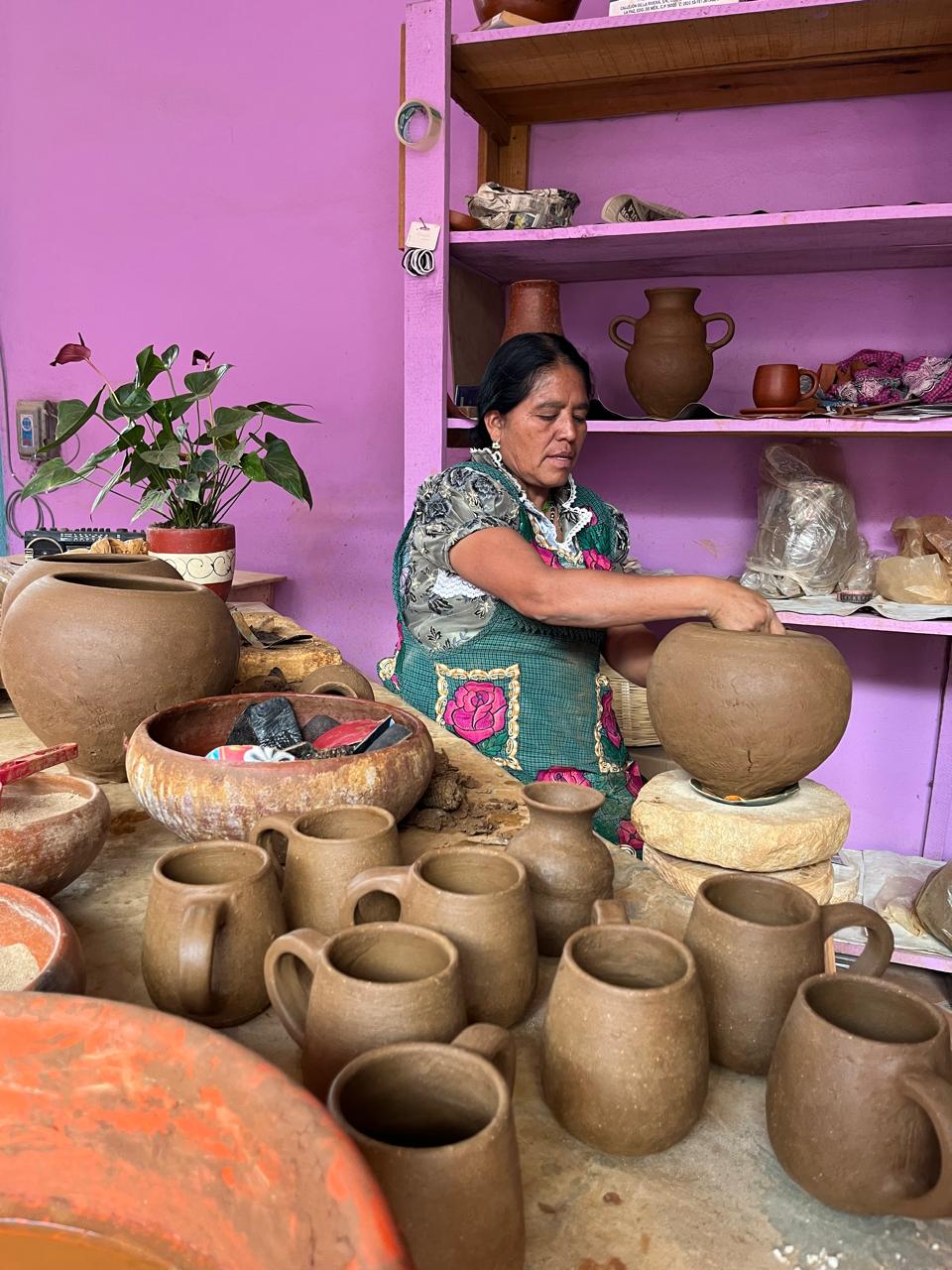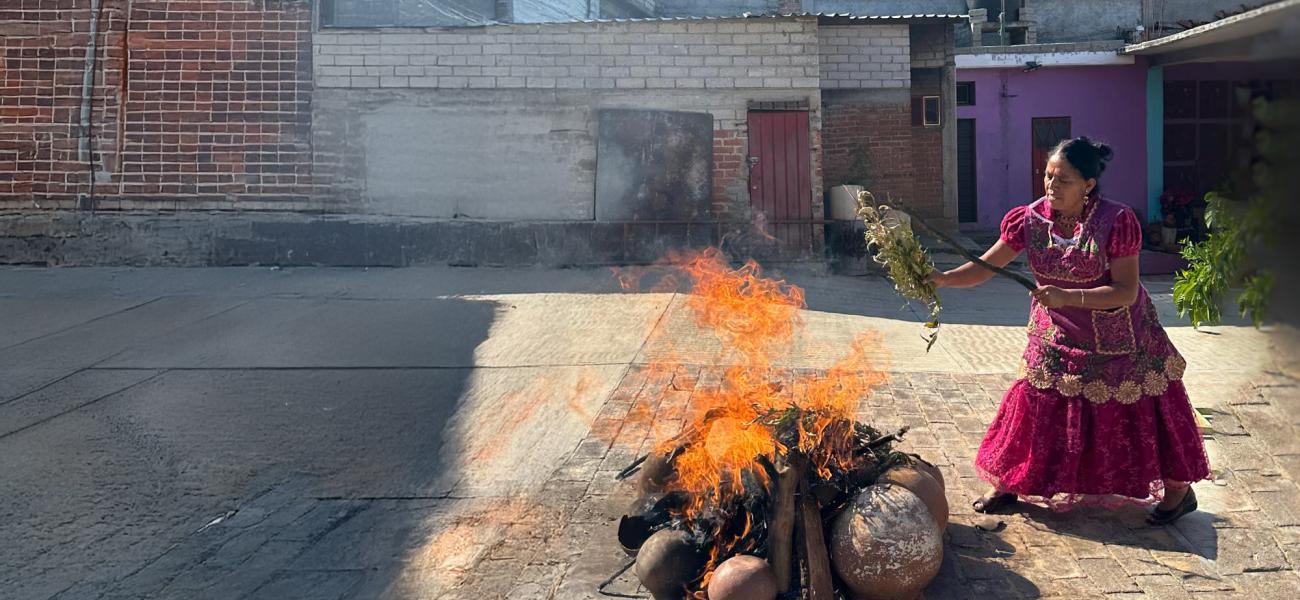 Surrounded by smoke, ash, and broken pots, Macrina tames the fires under the open sky. As she carefully fans the rising smoke with corn husks, following the time-honored Zapotec way of building a wood-fire, she ensures an even, slow burn for every piece. Passed down for generations, this timeless tradition of wood-firing red clay pottery lives on through Macrina’s mastery, where each piece reflects her unmatched craftsmanship. The journey begins long before the fire is lit. It starts with the artist's hands meeting the earth. From January to March, Macrina and the women of San Marcos climb into the mountains to forage for yellow and red clay. Carrying heavy costales (large sacks), the women bring the clay down the mountain, collecting enough to sustain their craft for the year.
Surrounded by smoke, ash, and broken pots, Macrina tames the fires under the open sky. As she carefully fans the rising smoke with corn husks, following the time-honored Zapotec way of building a wood-fire, she ensures an even, slow burn for every piece. Passed down for generations, this timeless tradition of wood-firing red clay pottery lives on through Macrina’s mastery, where each piece reflects her unmatched craftsmanship. The journey begins long before the fire is lit. It starts with the artist's hands meeting the earth. From January to March, Macrina and the women of San Marcos climb into the mountains to forage for yellow and red clay. Carrying heavy costales (large sacks), the women bring the clay down the mountain, collecting enough to sustain their craft for the year.
At the base of the mountain, the red clay is spread across sunlit patios as it dries under the Oaxacan sun. As the moisture evaporates slowly, the clay becomes ready for shaping. Macrina starts forming the clay; the traditions of Zapotec craftsmanship and her mother’s voice help allow her to embrace tradition with inventive techniques. There is not a potter’s wheel in sight.
Without a wheel, Macrina relies on tools passed down through generations: smooth leather scraps, curved gourd shells, and rough corncobs. These tools, paired with her skilled hands, shape each piece into a vessel of empowerment, strength, and resilience. Imperfections are smoothed, weak points patched, and weight carefully balanced, all with a deep understanding of the clay’s material qualities. Once shaped, the pieces dry in preparation for the sacred ritual of wood-firing.
The Ritual of Fire and Clay
Macrina begins by constructing a circle of broken pots from past firings to create a protective shell. She then layers oak firewood, maguey leaves, and corn husks, whose earthy scents fill the air as the fire begins to grow. Larger pots cradle smaller ones, carefully stacked and fitted to optimize the firing process. Tepalcates (metal sheets) are added to prevent staining, and fuels such as pine, maguey stalks, corn husks, and bull dung sustain the flames.
The fire transforms the clay into functional, living stories. It is a continuous cycle of experimentation and refinement. Every curve, mark, and polished surface reveals the skill behind the process. She monitors the flames with precision: if it burns black, more wood is added; if only ash remains, the pieces are complete. This interplay of fire and clay reflects her connection to ancestral traditions and the wisdom passed down through generations.

